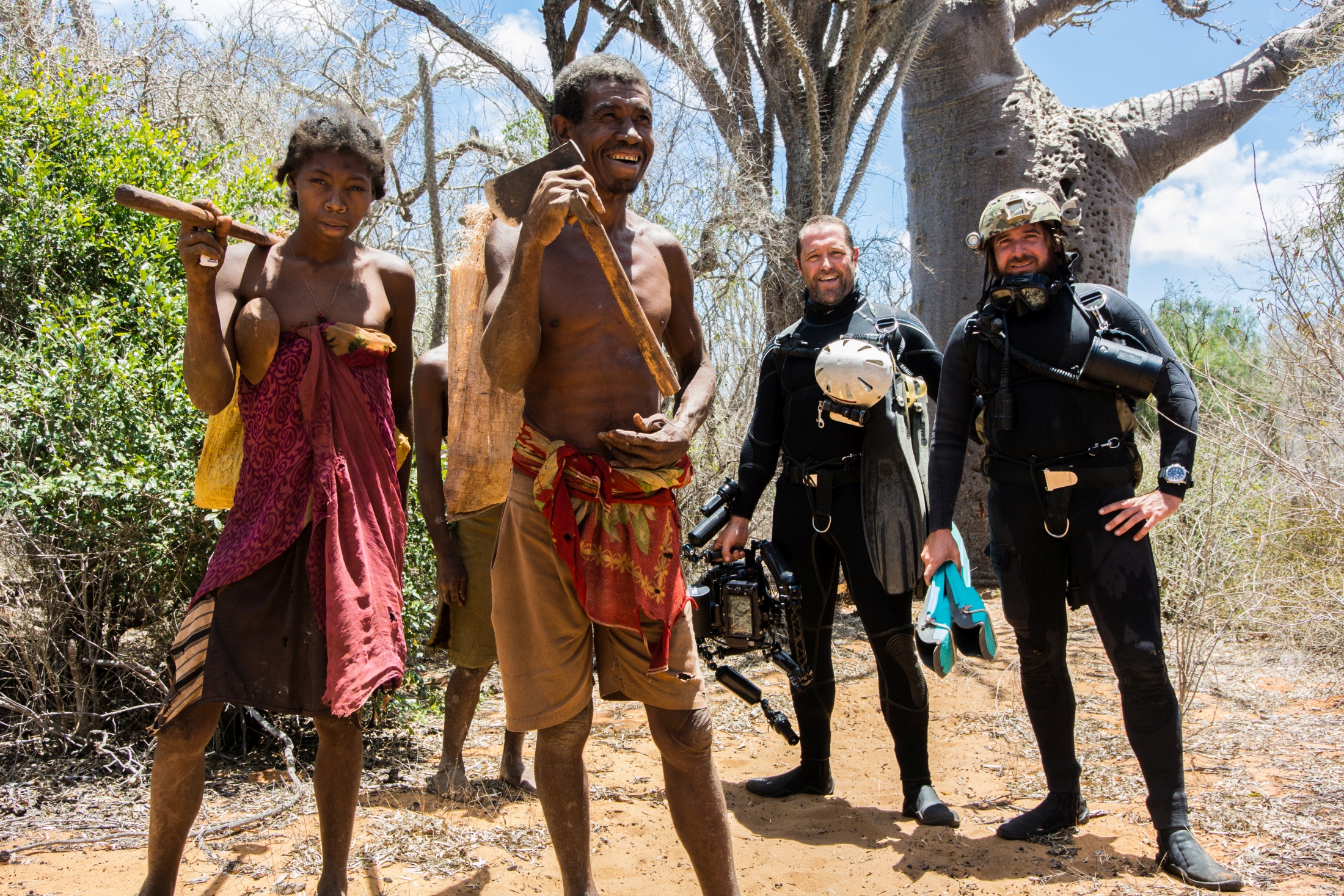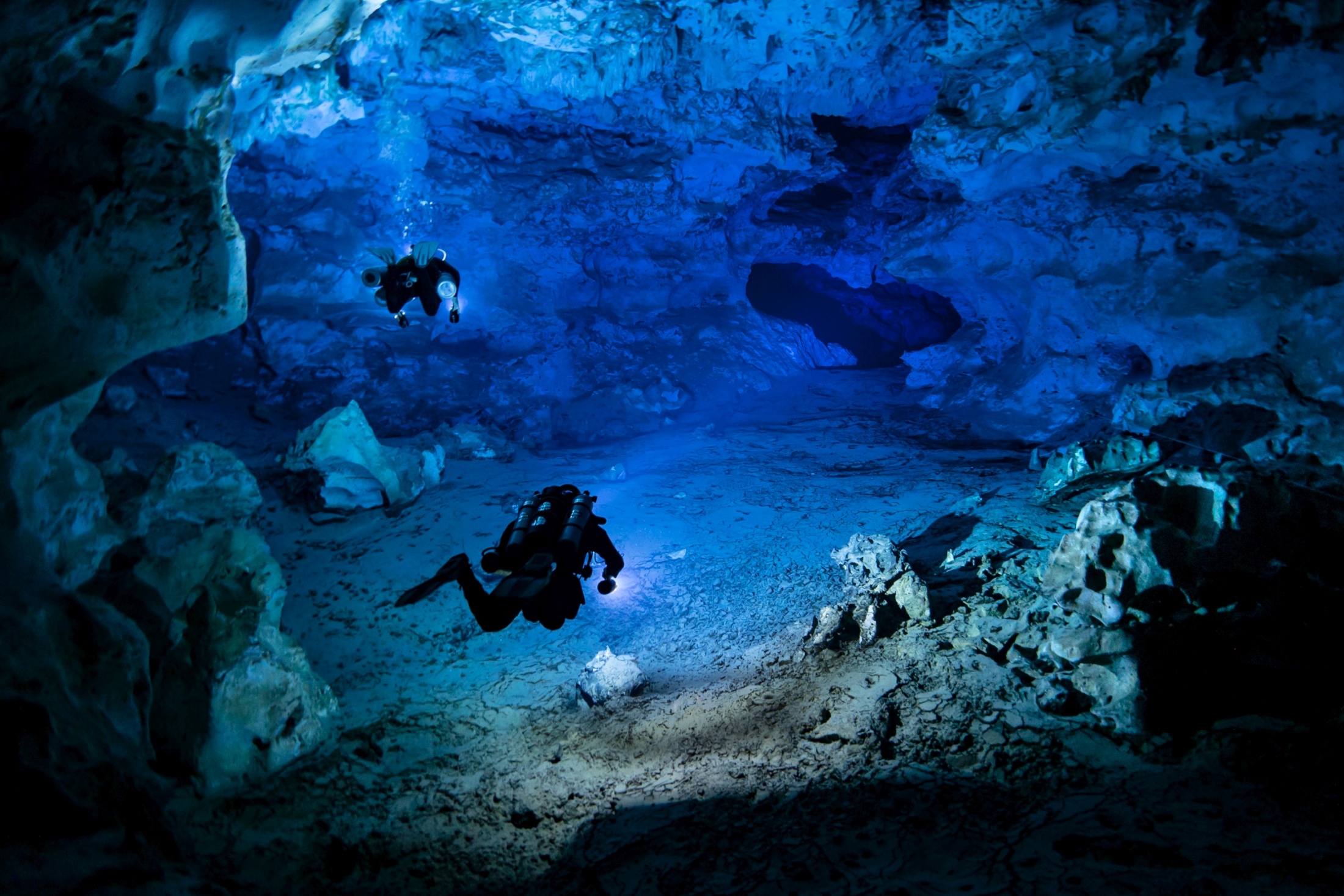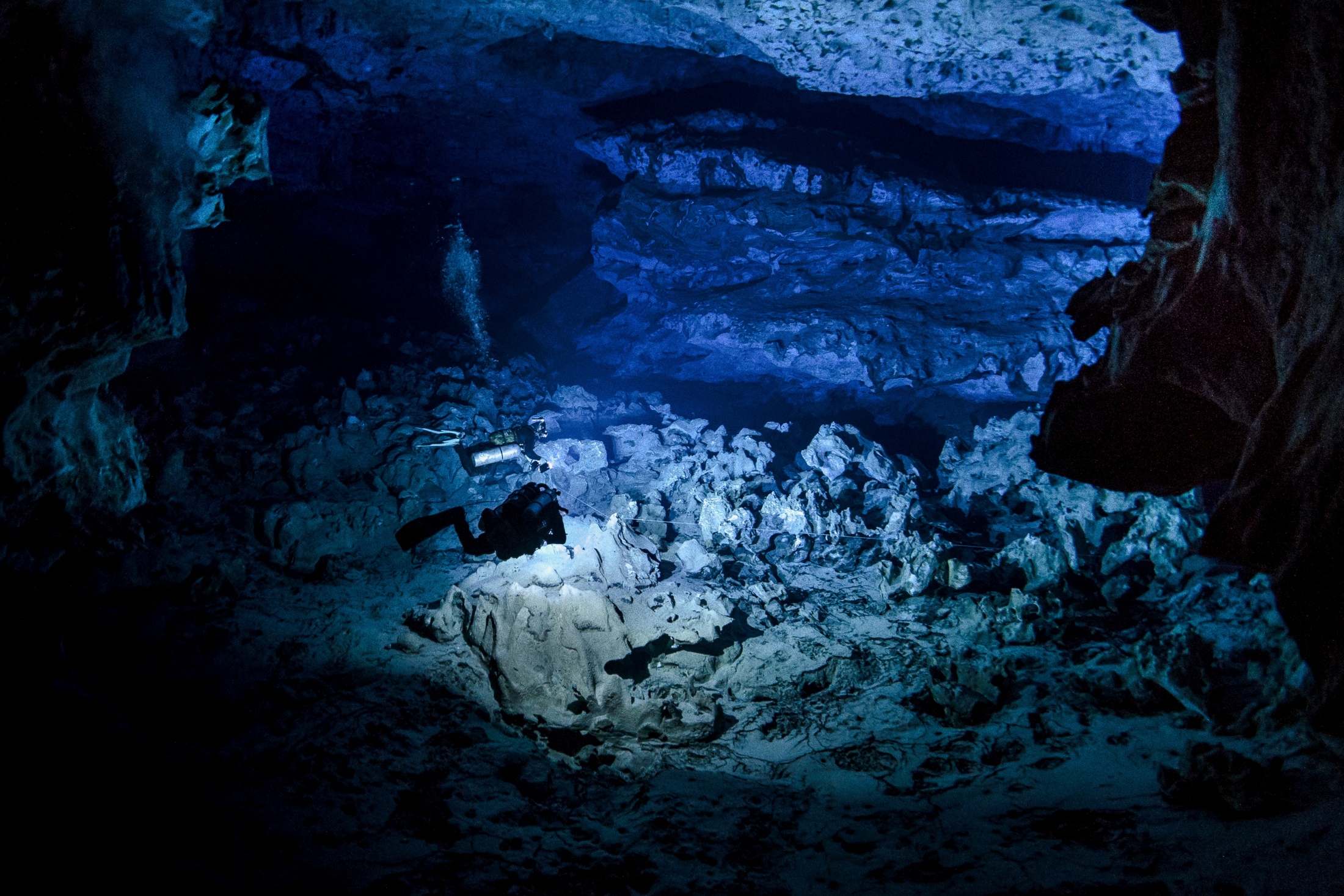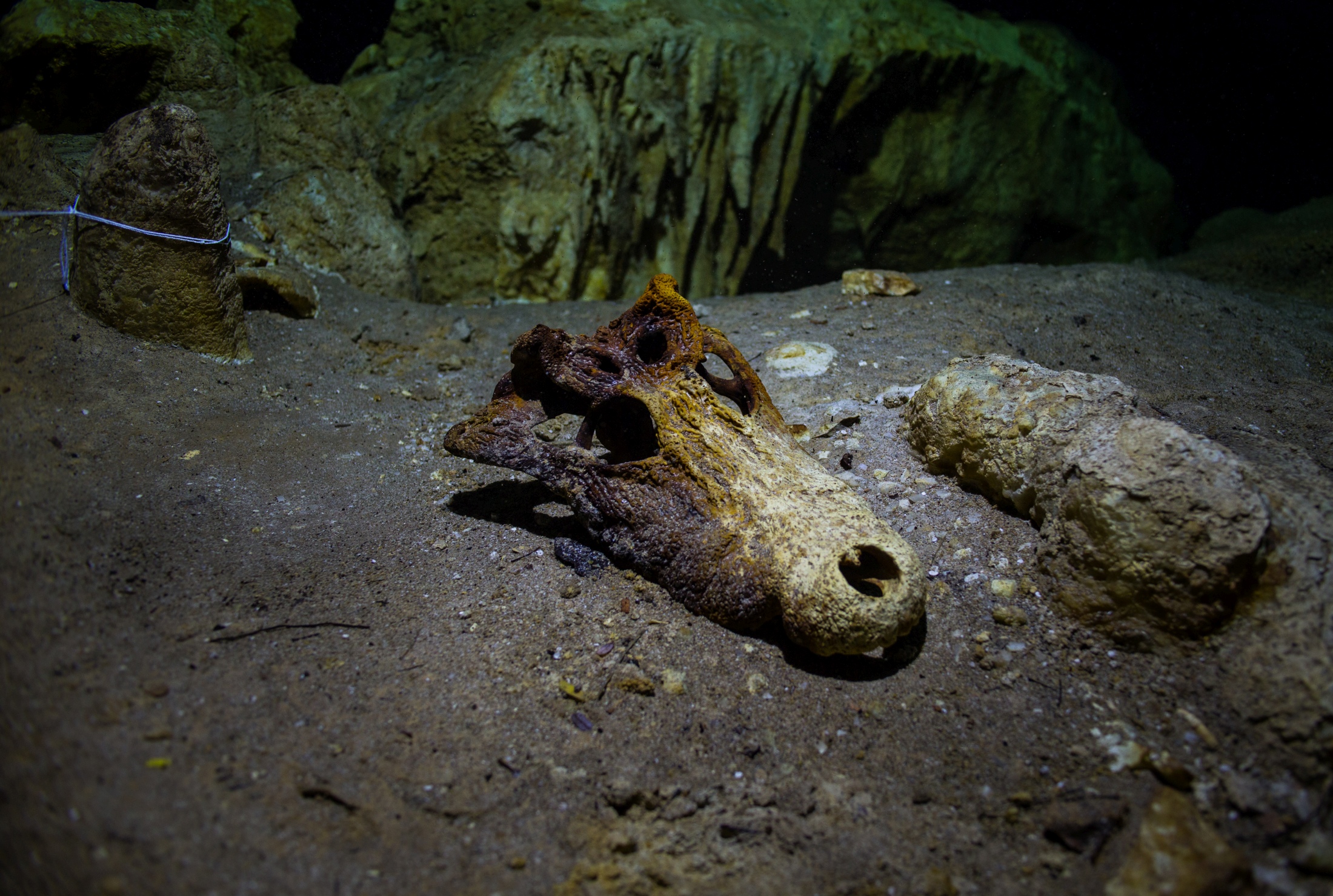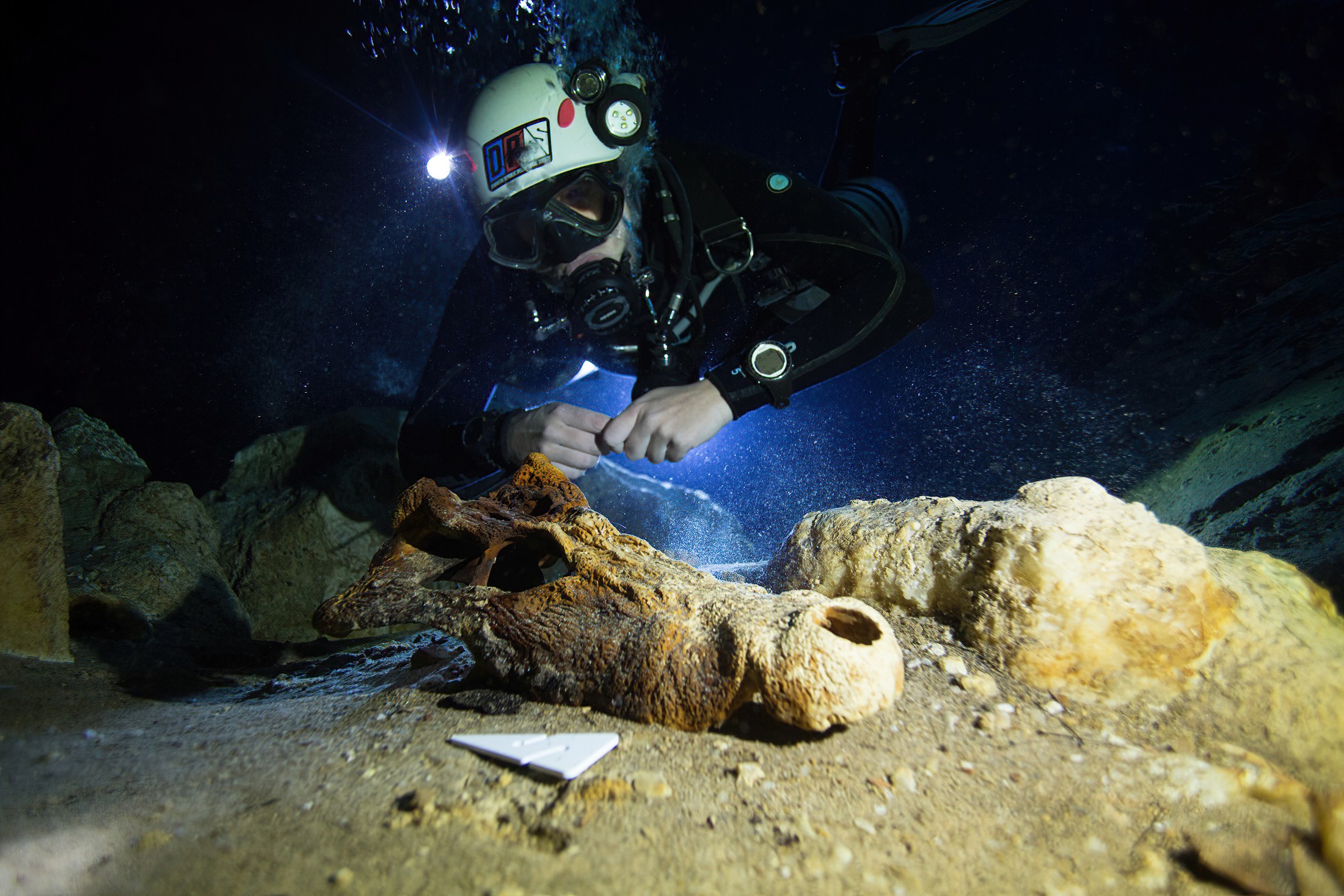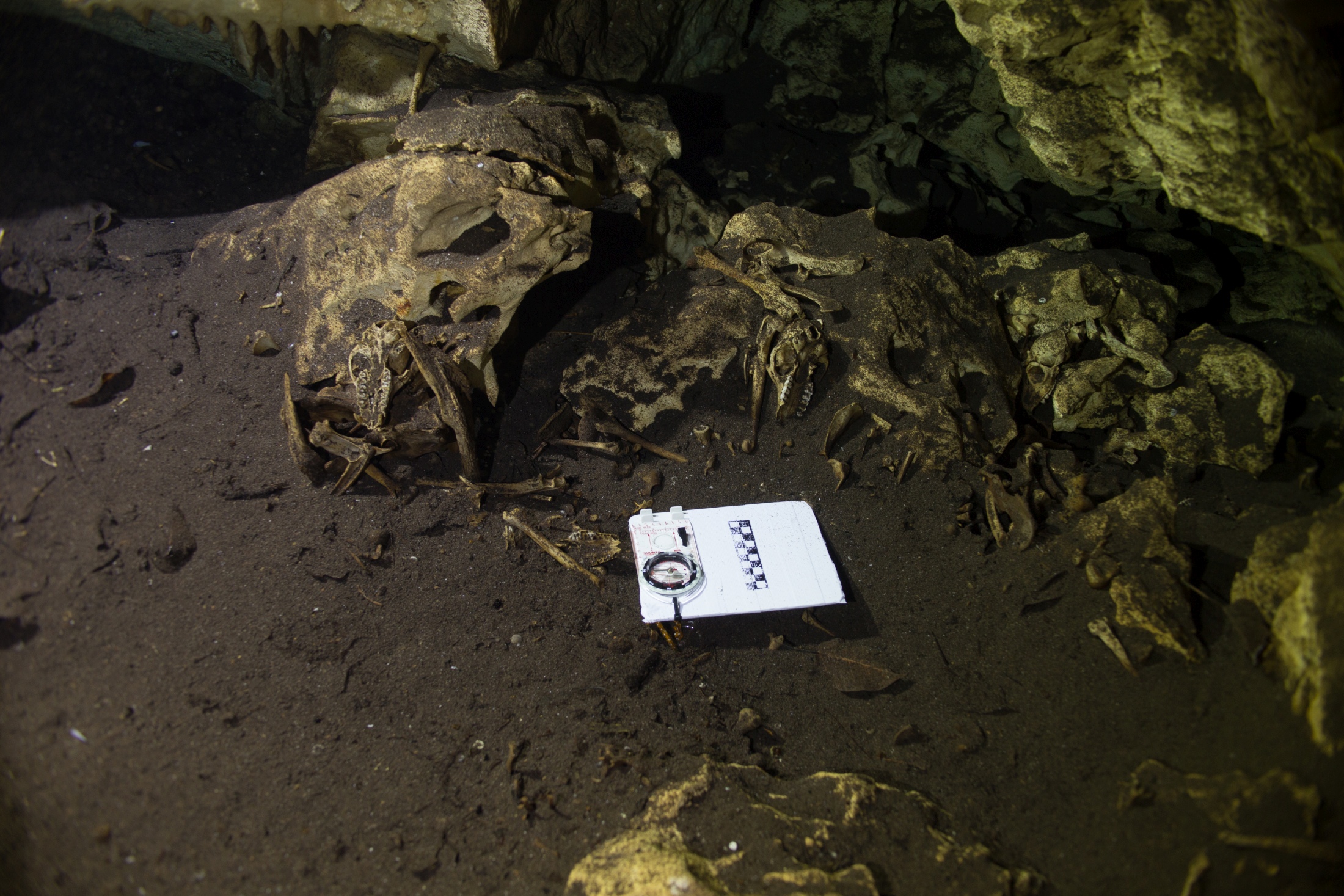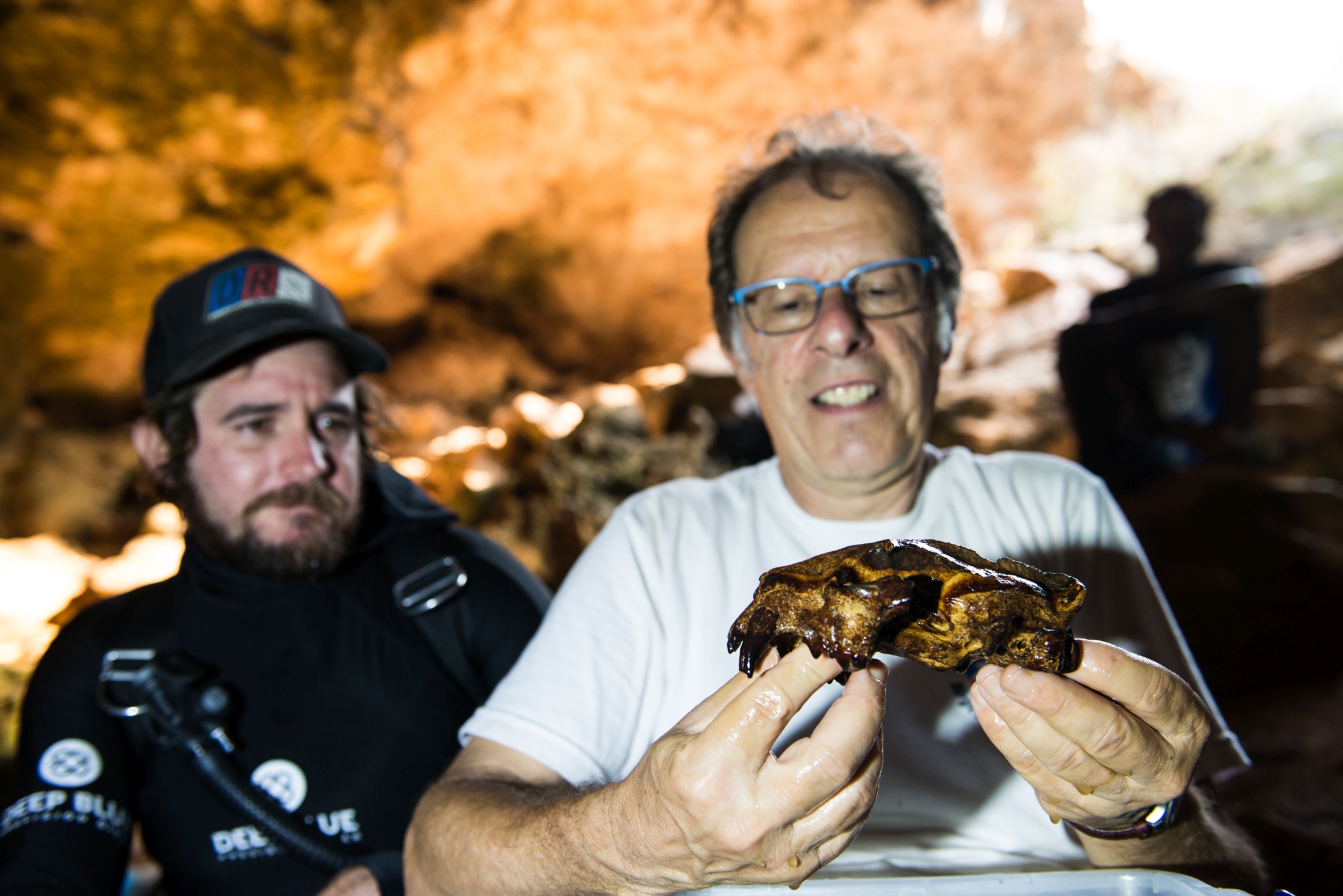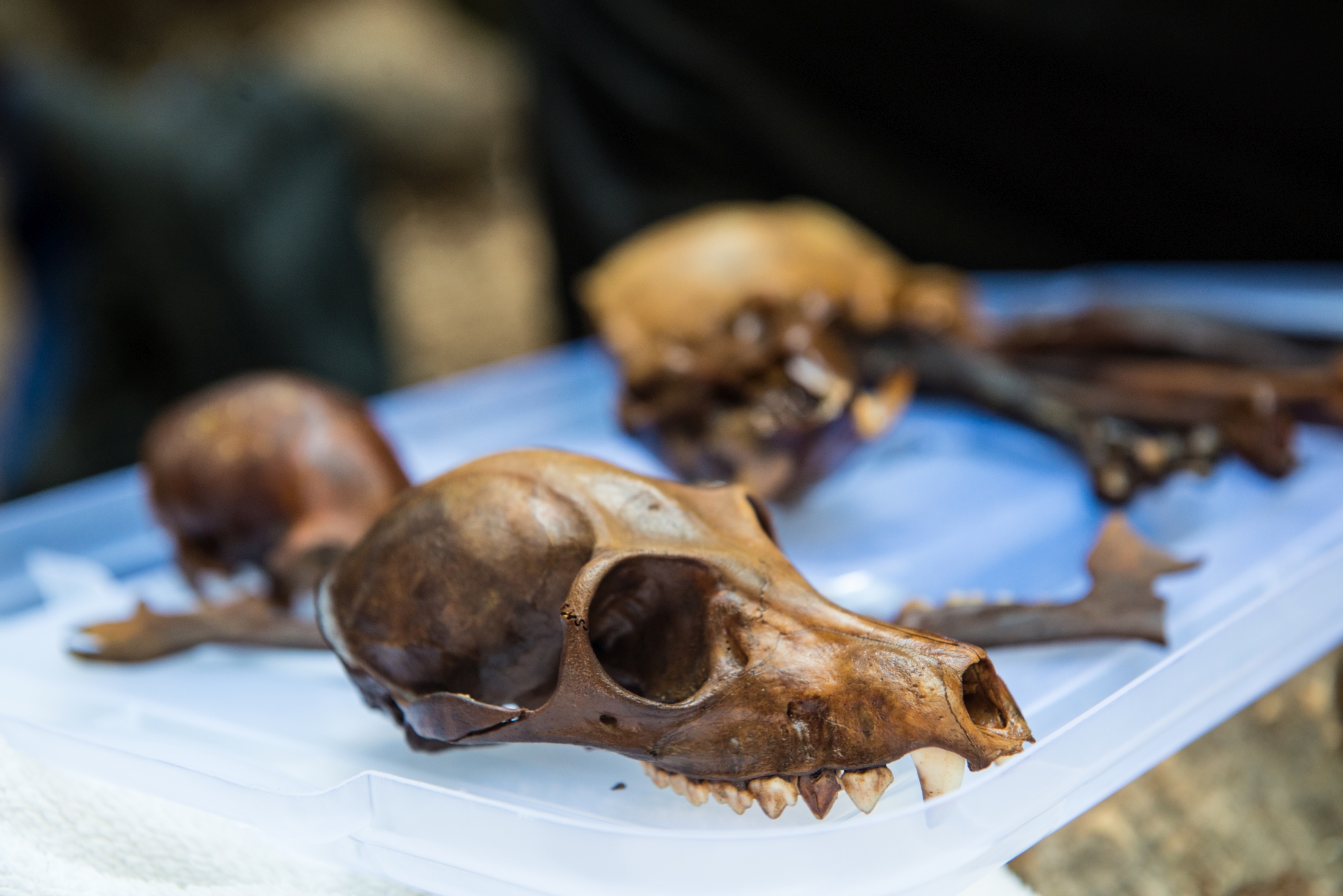

This was a much more formal expedition than the initial reconnaissance in 2013. At the same time, it was the first expedition of MKEP (Madagascar Karst Exploration Project) supported and co-funded by National Geographic and National Science Foundation.
As the team was much larger this time, the expedition's agenda planned for three key projects in different locations, with the possibility of adding a fourth, previously unchecked location if time allowed.
Upon returning to the sinkhole, it turned out that Aven was much richer in fossils than initially thought, both in terms of quantity and quality.
Documentation and sampling were carried out under the constant supervision of paleontologists, who ensured proper preservation of the finds and the establishment of proper documentation methodology.
During the research, it became clear that the find was not only extremely valuable but also one of the largest fossil clusters in the world. The fossils themselves are of excellent quality, and many of them are completely intact. They provide a window into the ecological past of this unique region.
In continuing the exploration of this cave, the team traversed a series of tight restrictions, passable only using sidemount configuration. Although the cave ended in a dead end, it compensated the team's efforts with three perfectly preserved and complete fossils of Cryptoprocta spelea, an extinct predator similar to a cat, the size of a gray wolf, belonging to the genus Fossa, which currently has one living endemic species – the Malagasy fossa.
Paleontologists studying this fossil believe that it was a den for these animals when the system was dry.
Malazamanga turned out to be a huge surprise for the entire team, which has vast experience in cave diving worldwide. Previous dives in the cave gave an impression of its immense size. It consists of a series of chambers separated by narrow passages with restrictions requiring partial removal of diving equipment. However, what initially seemed huge completely changed its appearance when the team returned with much more powerful lighting.
In the light of tens of thousands of lumens, what initially seemed to be the walls of the cave turned into massive rock columns. What the team took for side branches of corridors during the previous expedition suddenly transformed into one huge chamber over… 200 meters wide!
When the full scale and depth of this cave came to light, the need to continue exploration at depths greater than 50 meters and far beyond the 5 km of corridors already discovered became apparent. The enormity of the cave necessitated a review of equipment configurations and conducting future explorations using closed-circuit rebreathers (CCR).
Rumors circulated about the existence of caves 80 km north of Tulear in Madagascar. When the main part of the planned expedition was completed and part of the team had returned home, Philip, Ryan, and Patrick ventured on a nine-hour 4x4 drive through the most remote, though beautiful, deserts of Madagascar.
The team managed to make contact with Pierrot, a Swiss citizen living in Madagascar. Pierrot, a person of hospitality, introduced the team members to the chief Fahazoa, whose decision would determine the possibility of entering the sacred caves located on tribal land.
When it became clear to the locals during the first meeting that the team wanted to access the caves, the atmosphere became very tense, and the residents made it very clear that disturbing the peace of their sacred places was unthinkable to them.
However, when Phillip showed a video of diving in other caves in Madagascar on his phone, strong emotions subsided, and conflicts turned into curiosity and amazement. Initially reluctant locals understood that these caves could be more than they perceived them to be.
After a special cleansing ceremony conducted by the chief, the team was granted permission to explore the caves. On-site, it turned out that access to the interior was very difficult – it required overcoming thorny shrubs covering a steep slope strewn with huge boulders. The entrance part of the cave is a mud-covered chamber, home to a huge number of bats. The water in the cave is muddy, full of rotting dead bats, cockroaches, and centipedes. A quick verification by Ryan, who dared to enter the water and dive with a snorkel to a depth of 5m, suggests that this could be another discovery.
After a coin toss, in which the loser starts first, Phillip dived into the muddy water with almost zero visibility and dived to 22 meters. After surfacing, he stated that after passing through the layer of brown-tinted water, he entered something that could be described as "the most decorated cave anyone has ever seen." Another discovery became a fact, and Andakatomivola immediately made it onto the list of plans for the next expedition.
When we set off to Madagascar for the first time in 2013, I could never dream that we would be featured in nearly 80 News Outlets, from CNN and NBC to NatGeo. Incredible how much work we have been doing since then with scientists from around the world.
Patrick Widmann, CCR Cave Instructor Evaluator, Cave Explorer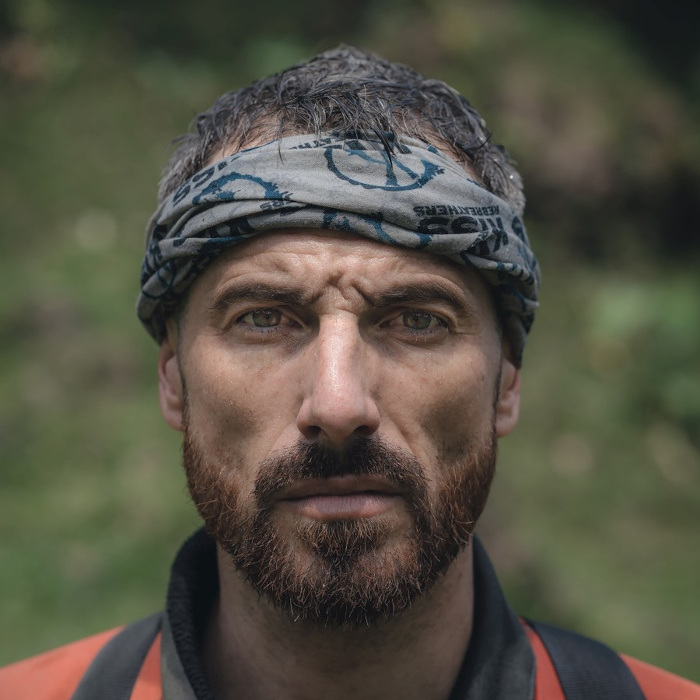
10.2014
It's your contribution!
By choosing the brands involved in our program for your personal diving, you directly contribute to the support we can provide to ESP divers around the world. Every little bit counts towards reaching our goals.
Thank you!
How to apply?
Share your vision with us. We want to support adventures, explorations, and projects that deepen the understanding of the underwater world.
